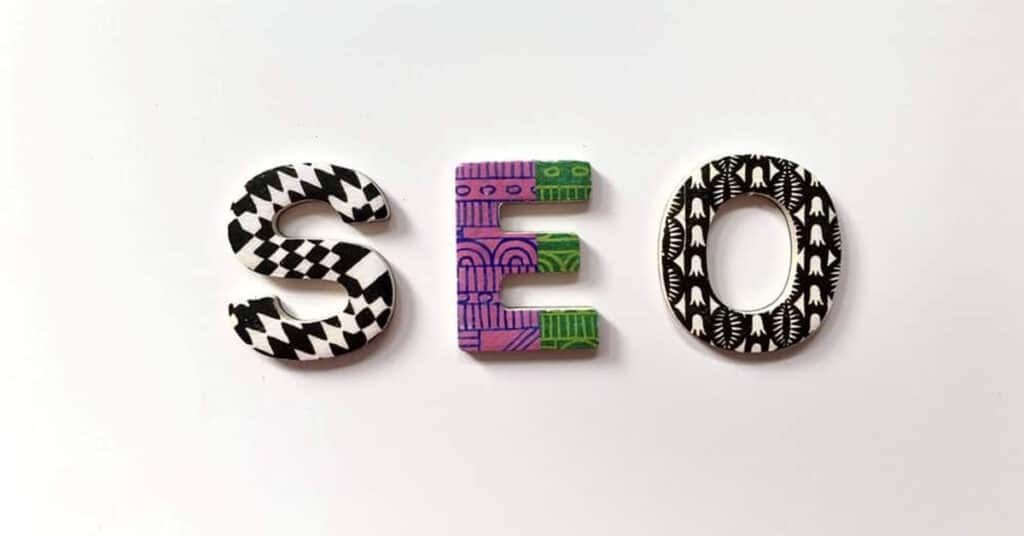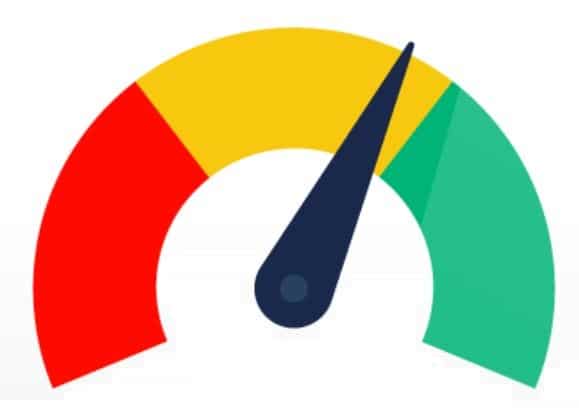We are pretty sure that you used a search engine to look up ‘how does SEO work’. We are also pretty sure that, since you selected our website to help answer your question, the website must have showed up somewhere in the top half of the first search result page. This did not happen randomly, but, instead, through a complex algorithm that the search engine uses to pick the most appropriate pages out of the millions of pages on the subject.
A search engine does not charge money for giving you search results related to every topic under the sun. So, how does SEO work? How does it earn money? Simple – it charges someone else. So, SEO is important to a search engine for advertising purposes.
Why is SEO Relevant for Search Engines?
When you enter your query, the search engine returns a page to you. This page is called SERP (Search Engine Results Page). SERP shows ‘organic results’ as well as PPC (pay-per-click ads). The former depends heavily upon SEO. The latter is simply paid-for.
Making a payment cannot give you a spot in the organic results.
However, like we said, search engines have an ad-based revenue model. So, it is in a search engine’s best interest to show you the most relevant results. This way, you are likelier to return to that search engine the next time you need to make a search. The greater the number of search engine users, the higher the number of ad views. Consequently, the more money the search engine can make.
Why is Understanding SEO Important?
Why should we be concerned about the question, ‘how does SEO work’?
The truth is, the internet has made the entire world accessible to us. No information is more than a few clicks or touches away. Naturally, going online is the easiest way to access any information.
How did you end up reading this? You probably decided to learn about the workings of SEO. To do so, you probably accessed a search engine and entered the words ‘how does SEO work’.
Next, you perhaps clicked on one of the top search results. If the website was not relevant to your query, you probably hit the ‘back’ icon. You looked around at a few more websites until you ended up with what you wanted.
Without proper website optimization, you have a very low chance of showing up on the first page of a search result. Even if you do, it is probably because of your business name.
This means that you will never show up to users who might be looking for a website like yours. If you cannot be visible to your target audience, you can never tell them what makes you stand out.
In other words, poor SEO makes you lose valuable leads. Your competitors will love this inadequate SEO strategy. You are giving away your customers without even fighting to attract and keep them.
How Does SEO Work? A Technical Clarification:

By now, you have a basic understanding of the reasons search engines want to offer the best possible results. Next, it is time to get into the details about the question ‘how does SEO work’?
Every search engine has a spider. You can think of it as an automated robot.
These spiders work hard to obtain information on your pages and website. With this information, the spiders figure out when they should show your page or site to a searcher. Spiders collect information like back-links, internal linking, social signals, title tags, and page speed.
Google’s algorithm uses over 200 factors while ranking a website. This means that there are plenty of aspects to focus on. This also means that there are several ways to improve your SEO. Site optimization and ranking is dependent upon both on-page and off-page factors.
On-page factors, as the term suggests, are present on your page. Examples are site speed, content, title tags, internal linking, and image-alt tags.
Off-page factors, on the other hand, are based almost completely on how your site links to other sites.
Remember that spiders are automated programs, and have certain limitations. For one, they cannot access websites like an actual human would. They simply crawl the website code. Flashy designs, vibrant colors, or even meaningful content will not matter to them.
How to Drive Traffic from Search Engines?

First, remember that Google handles almost all of the world’s search-engine traffic. Hence, your ultimate aim should be to make your website show up in Google’s results.
Remember that you should be careful while trying to get your site to rank on Google. Some methods, although apparently easy, are also extremely risky.
So, what will work? How will Google decide if it wants to show your page to a searcher? How can you draw traffic towards your website?
Google has a very intricate algorithm. There are a few links that might help you understand things in greater detail. However, for now, know this:
Google simply picks out pages containing the most relevant and high-quality information for the user.
It decides this relevance through ‘crawling’. This means that it will algorithmically read and evaluate your website content. Based on this evaluation and the keywords, Google will determine if your website is relevant to the searcher’s queries.
There are several factors for determining ‘quality’. However, the prominent one is the quality and quantity of the websites linked to yours. In simple words, if your website is linked by a website that no one else on the internet is linked to, while your competitor’s website is linked with credible sites like BBC.com, Google will see the competitor website as more reliable.
Other Elements:

Increasingly, Google’s algorithm is considering additional factors in determining website rankings. These are:
The level of engagement (are users staying on your site and using your website content? Or are they just returning to the search page to look for another website? Are they even clicking through or simply ignoring your listing?), mobile-friendliness, loading speeds, extent of content uniqueness (duplicate or low-quality content is undesirable to Google).
Hundreds of such factors are involved in the ranking decision, and even these factors are constantly being altered and refined.
Fortunately, you do not need to be a search engine expert to make your site rank. There are some best practices that can help you in this regard. Using these practices, you can attract traffic without the need for reverse-engineering Google’s core competencies.
There are several valuable resources that discuss more about search engines and how they work. One such source is Google’s very own graphic.
Search Engine Ranking:

When a user searches for something, the search engine will look through its index. It will then produce results which it believes are the most relevant. How the search results are listed is called ‘ranking’. Generally, the higher the website’s rank, the more relevant it is to a searcher’s query.
You can block crawlers from accessing certain sections or the whole of your website. You can also request search engines to not keep certain pages in their indexes. However, if you wish that your site is visible to your audience, you need to ensure that it is both index-able and crawl-able. Else, your site might as well be invisible.
Modern SEO is propelled by natural language. That is, people enter queries as complete questions rather than as a list of three or four keywords. This is primarily because tools like Google and Siri are allowing people to speak – rather than type –their searches. Since there is more detail in search queries, it has become easier for people to find relevant answers. This means that you can rank for longer, less competitive keywords. Additionally, these keywords have greater detail, and therefore, more effective traffic conversion. On aggregate, long-tail keywords return more searches compared to ‘gold’ keywords. Hence, from the ranking point-of-view, it is much more beneficial to focus on natural language queries rather than on a handful of leading keywords.
In SEO, Not Every Search Engine is Equal:
A lot of beginners think about how important search engines are relative to each other. Almost everyone knows Google’s dominant market share. But is it important to also rank for Yahoo, Bing, and others? If so, how important?
In reality, despite the existence of more than 30 search engines, Google is the center of attention for the SEO community. Why? Simply because almost all users turn to Google for their searches. Throw in Google Maps, Google Images, and YouTube (owned by Google), and over 90% of all searches are occurring on Google. That is 20 times more than the searches happening on Bing or Google.
SEO v/s SEM:
SEO and SEM can be seen as two sides of a coin. However, when it comes to actions and marketing aspects, there are several differences between the two. Often, the two terms are used to refer to similar activity sets. This might be confusing for people who are not so familiar with the SEO/ SEM world.
How do SEO and SEM Complement Each Other?
Firstly, both depend heavily on keywords for driving traffic to web-pages and business websites. Despite the differences in marketing techniques, both focus on the flow of traffic and how it is associated with marketing strategies. People use search engines to look for something. They will either find that something through SEM (paid results) or SEO (organic results).
Hence, it is vital that you have a strong search presence. By using a combination of SEO and SEM, you can improve your long-term visibility.
As we mentioned, SEO is related to organic traffic. This means that it does not involve paid listings. SEM, on the other hand, is for paid targeted ads. These might complement SEO, but only if you have an SEO-friendly website. If not, SEM has little chance of succeeding.
SEO is the foundation on which you develop SEM. When both are working well together, your chances of boosting conversion rates and attracting quality traffic skyrocket. Start by having an SEO-friendly website. Next, make use of properly targeted ads. This way, you can lead the list of paid search list. But, this cannot happen until you have the right SEO strategies. Google should see your website as a credible one. If you have a new website, it is better to focus on your PPC campaign initially. This is because SEO rankings can take a bit of time to establish themselves. However, this does not mean that you completely stop focusing on your SEO.
Search engines continue to alter their rankings parameter. This means that SEM and SEO will continuously be shifting. Hence, it might be difficult to predict anything. However, there are some probable directions:
How Long Will SEO Take to Work?
Now that you have asked the question, ‘how does SEO work?’, the next question to ask is about the time it will take before SEO contributes to leads and sales. Because, after all, you do not want to be content by simply ranking well. You want those ranks to convert into leads and sales. So, how long will SEO take to work? Well, it depends. It is frustrating, but it is also true. Some of the things it will depend on are:
- How old or new your website is.
- The amount of SEO done on your website so far.
- The shape of your website.
- The amount of content on your website.
- Your website’s link profile.
Every website starts from a different place. It does not matter if two websites operate in the same industry and have the same target audience.
However, we can present a probable scenario for your initial SEO efforts and the expected results:
Going About SEO Project Timing:
Month 1:
This month is about planning, discovery, research, keyword strategy, and website audit. If the discovery and research can be expedited, you might be able to make technical website changes within month number one. However, in most cases, discovery and research is a lengthy process.
Month 2:
The technical SEO stage starts. This means that you will make website changes based on the results of the audit. Sometimes, an entire website overhaul is needed. This process itself can last several months. You can start building content and developing link profile simultaneously with the overhaul. If you find the need for an overhaul, you will still be doing SEO work but not getting any results at this point. This is because you will only be able to see the impact once you have finished the job.
Month 3:
Prioritize technical optimization and content creation. Also, focus on link profile development. Get rid of any poor links. At month three, you should be able to notice a clear improvement in traffic, rankings, and leads. This means that you can assure yourself that your SEO strategy is starting to fetch results.
Month 4:
By this point, you should have included social media handling to the plan. This will help promote your content further and attract more website traffic. You can also enjoy a natural and healthy link profile. Moreover, social media will be able to generate leads by itself. Content creation should continue. Perhaps you can go for a bit of media outreach or PR. Traffic, and therefore leads, should continue to increase.
Month 5:
If you find that you are attracting at least 5,000 monthly visitors, you should consider optimization of conversion rate. This way, you can convert more of your traffic into sales/leads. At and beyond this point, your main focus should be on creating and promoting content. Also dedicate more efforts to creative elements. What these precise elements are will depend upon your type of company and website.
Almost all SEO firms give a timeline of 4-6 months. That is around the time you start observing SEO results. However, remember that SEO results continue to grow with time. Hence, what you are seeing at month 6 is significantly less than what you will be seeing at month 12. At a certain point, the results will level off. At this stage, it is more result maintenance than growth.
Do Not Stop Too Early:
A lot of businesses do not understand the true extent of money and time required for SEO success. Even with a considerable SEO budget, you can hardly expect results within the first three months. Many companies start well, but give up when they fail to obtain their expected results at the end of month three. These companies started off having unrealistic expectations. The truth is that you need to commit an SEO budget for at least six months to a year. If not, it is better to invest that budget elsewhere. SEO generates long-term results, and will not produce an overnight increase in leads or sales. However, with proper commitment, planning, and patience, SEO is a top marketing strategy that promises a healthy ROI.
SEO Tips for Increasing Traffic:
1) Fill missing subtopics to improve content:
Hardly any draft is perfect; there are almost always some missing points that can affect your page’s or website’s search engine ranking.
You should try to identify topics or keywords that the leading pages rank for, but yours don’t. If you could add those topics to your posts, you can end up ranking for the keywords as well. Moreover, this approach will also help you improve your primary keyword ranking, since your page will appear more complete to Google.
2) Perform a yearly content audit:
During a content audit, you will analyze every page on your site to determine whether they should remain unchanged, be updated, or even deleted. Yes, there are times when deleting certain content can increase your traffic.
Regardless of the tool that you use for your content audit, remember that you should never delete pages or content that you think are crucial for your site – even if your audit tool suggests otherwise.
3) Use keywords in titles and meta-descriptions:
Your content should certainly contain your keywords, but so should your titles and meta-descriptions. You can use these two fundamental HTML components to make a real impact with your keywords and use them for your page optimization.
Almost every website-hosting platform allows you the option to change or edit the meta-description and title for your pages. WordPress, for example, contains two boxes with the labels ‘SEO Title’ and ‘meta-description’.
Remember that these two items are visible in search results, and can influence an internet user’s decision to visit your page. Considering that they are a mere few words, titles and meta-descriptions have quite the impact. So, you need to ensure that they are powerful.
4) Increase the word count:
With any content piece, comprehensiveness is of tremendous importance. A comprehensive piece makes it easier for search engines to determine the topic of the content and if it covers everything that a searcher would want to know. Also, content with a healthy length indicates that your website or page is an authority on a specific subject, and therefore deserves a higher rank. Moreover, the more words your content has, the more chances there are for you to add back-links and keywords. However, you also need to make sure that your piece is not too lengthy, as excessively long pieces of content can reduce the speed of crawing speed of search engines.
5) Publish unique content:
While adding new pages, it is vital to steer clear of duplicity and stick to original content. The more your relative uniqueness, the greater your chances of getting high rankings in search engines.
Algorithms for Google and other search engines can detect unique content, and therefore, websites with original material are far more likely to do well in search engine rankings. Remember that plagiarism can cause your website to be removed from the listings of a search engine. So, make sure that you swear by originality.
Conclusion:
We hope that this guide helped you understand the importance of search engine optimization. It is easy to get the basics right. On the other hand, if you do not, you might cause significant damage to your online presence.
Making a few past unsuccessful SEO decisions is no cause for discouragement. Start over the right way, and witness results within the next six months or year. Make sure that you are researching your keywords before you start with your newest blog post. Based on the keyword data, you can optimize the basics, like descriptions and title tags.
There is no reason that you cannot stand out from your competitors. Maybe this guide helped to change, or even transform, your SEO attitude? Get in touch with us now to take your SEO game to the next level.









